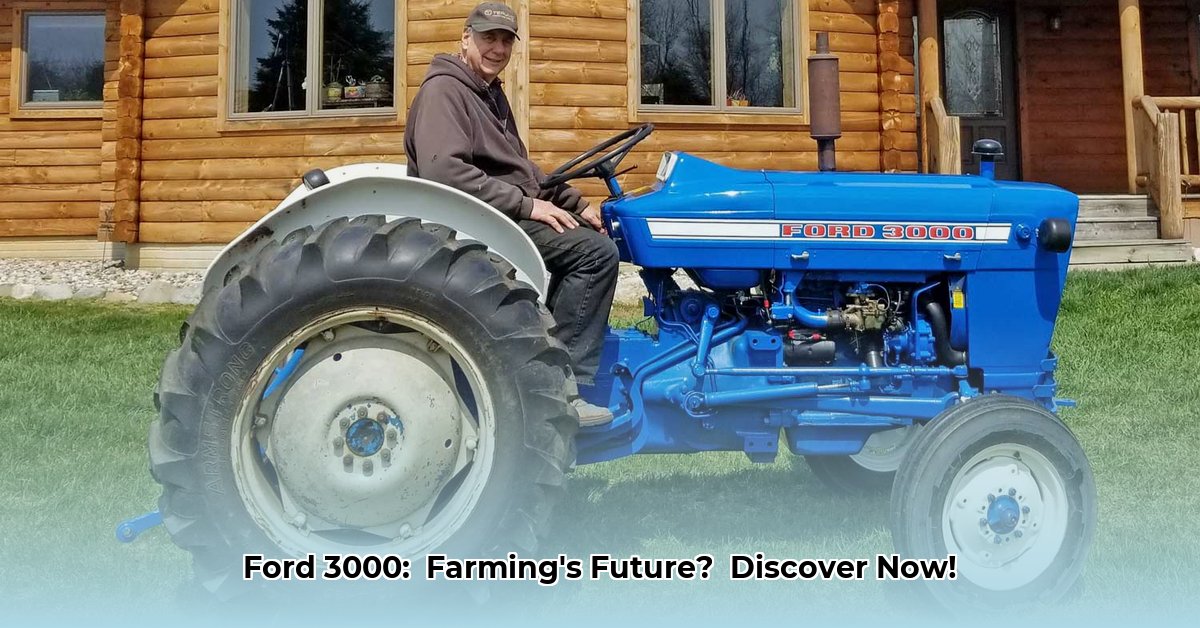
The agricultural landscape is undergoing a significant shift, driven by growing concerns about environmental sustainability. While advanced, high-tech tractors dominate the market, a resurgence of interest in vintage models like the Ford 3000 is revealing a compelling alternative. This long-form article examines the sustainability of the Ford 3000, considering its longevity, repairability, efficiency, and overall environmental impact, offering a balanced perspective for farmers, dealers, policymakers, and environmental organizations. For more detailed specifications, check out the Ford 3000 specs.
Longevity and Durability: A Legacy of Endurance
The Ford 3000, produced from 1965 to 1981, is renowned for its robust construction and exceptional lifespan. Unlike modern tractors designed for shorter lifecycles, many Ford 3000s remain operational today, a testament to their durable design and the skill of their previous owners. Data from resources like TractorData and TractorHouse shows a significantly longer average operational lifespan for Ford 3000s compared to contemporary models. This inherent longevity significantly reduces the environmental burden associated with frequent replacements. "My grandfather's Ford 3000 is still running strong after 40 years on the farm," recounts John Miller, a third-generation farmer from Iowa. "It's the testament to quality that's hard to find today."
Repairability and Parts Availability: A DIY Farmer's Dream
The Ford 3000's relatively simple mechanical design is a key element in its sustainability. Unlike modern tractors filled with complex electronics, the Ford 3000's straightforward mechanics make repairs significantly easier and often possible with basic tools and knowledge. While parts availability can be a challenge—varying regionally and sometimes requiring sourcing from specialized dealers or online marketplaces—the overall repairability is significantly higher than that of newer models. This reduced reliance on new manufacturing reduces the environmental burden and contributes to a circular economy model, minimizing waste.
Efficiency and Maintenance: A Balanced Perspective on Fuel Consumption
It's important to acknowledge that Ford 3000 tractors are less fuel-efficient than their modern counterparts. However, the environmental impact of a tractor's lifecycle must consider more than just fuel consumption. The manufacturing process of a new tractor—including raw material extraction, manufacturing, and transportation—represents a significant embedded carbon footprint. While a Ford 3000 may consume more fuel over its operational life, the significantly reduced manufacturing and disposal impact can offset this. Therefore, a comprehensive analysis requires careful consideration of the entire life cycle, not just operational fuel efficiency.
Does the reduced fuel efficiency of the Ford 3000 outweigh the significantly smaller manufacturing and disposal impacts? The answer is nuanced.
Sustainability Assessment: Weighing the Pros and Cons
The Ford 3000's sustainability is a complex equation. Its longevity and repairability, which lower manufacturing waste, are major advantages. However, lower fuel efficiency and the potential challenges with parts availability and repair expertise need to be considered. While a full life cycle assessment (LCA) is beyond the scope of this article, the evidence strongly suggests a smaller overall environmental impact compared to constantly replacing modern tractors. Further research into comparing LCAs of vintage versus modern tractors is needed to confirm this.
Actionable Recommendations: A Multi-Stakeholder Approach
Driving towards sustainable agriculture requires a collective effort. Here's how different stakeholders can contribute:
1. Farmers: Prioritize preventative maintenance; develop local repair networks; explore alternative, sustainable fuels; invest in mechanic training or apprenticeships.
2. Equipment Dealers: Increase the availability of replacement parts for the Ford 3000; offer mechanic training and maintenance services; partner with farmers to support a local repair ecosystem.
3. Policymakers: Incentivize repair and refurbishment over replacement; provide tax credits for vintage tractor maintenance and parts; fund research on sustainable agricultural practices.
4. Environmental NGOs: Promote the benefits of vintage equipment in sustainable agriculture; support the development of repair networks and parts recycling programs; educate farmers and policymakers on the environmental benefits of repairing and reusing existing equipment.
Conclusion: A Sustainable Future, One Tractor at a Time
The Ford 3000 tractor represents a compelling case study in sustainable agricultural practices. While acknowledging the trade-offs inherent in using older equipment, its longevity, repairability, and reduced manufacturing burden offer a pathway toward greater environmental responsibility in farming. By fostering a culture of repair, reuse, and responsible resource management, we can contribute to a more sustainable agricultural future—one vintage tractor at a time.